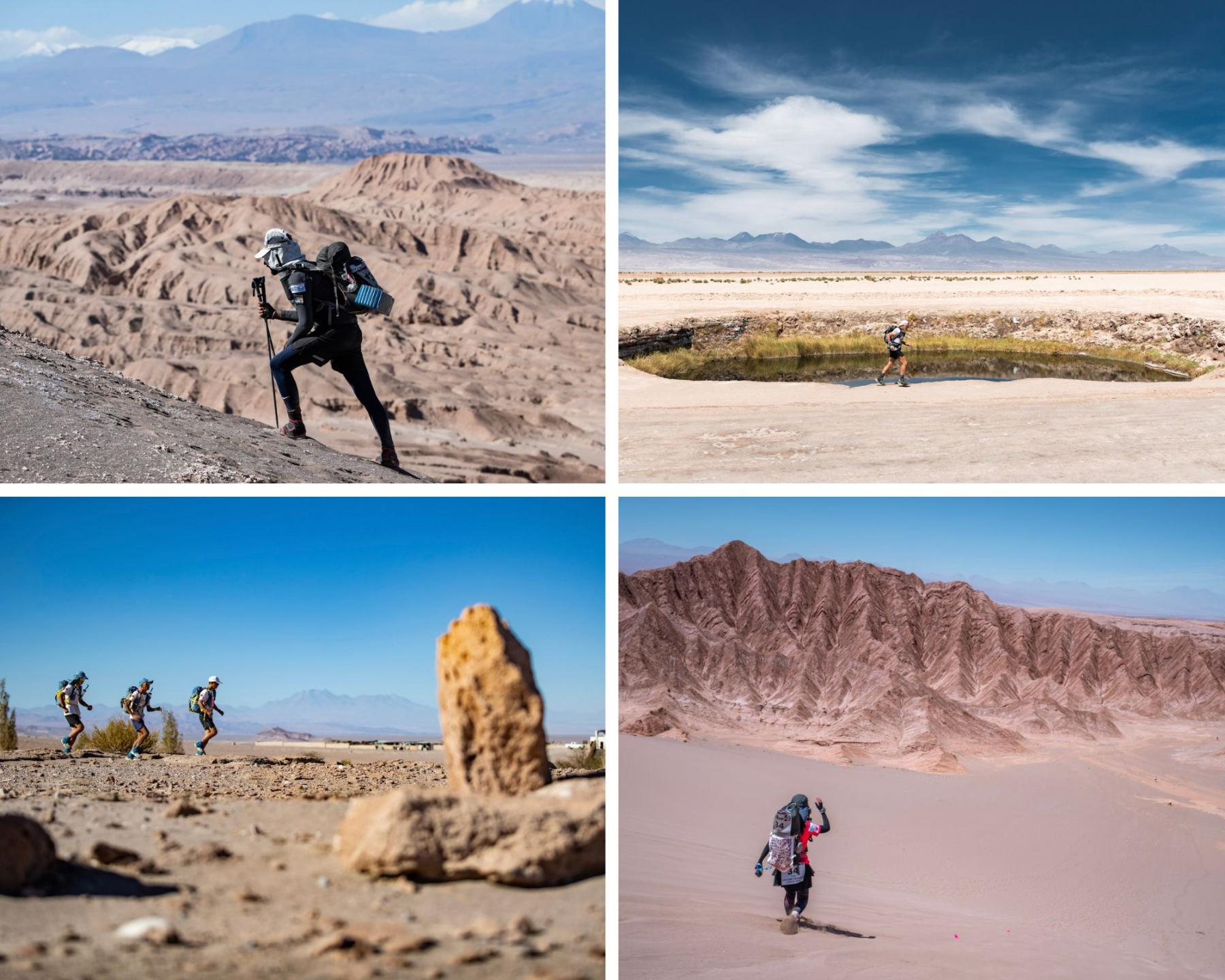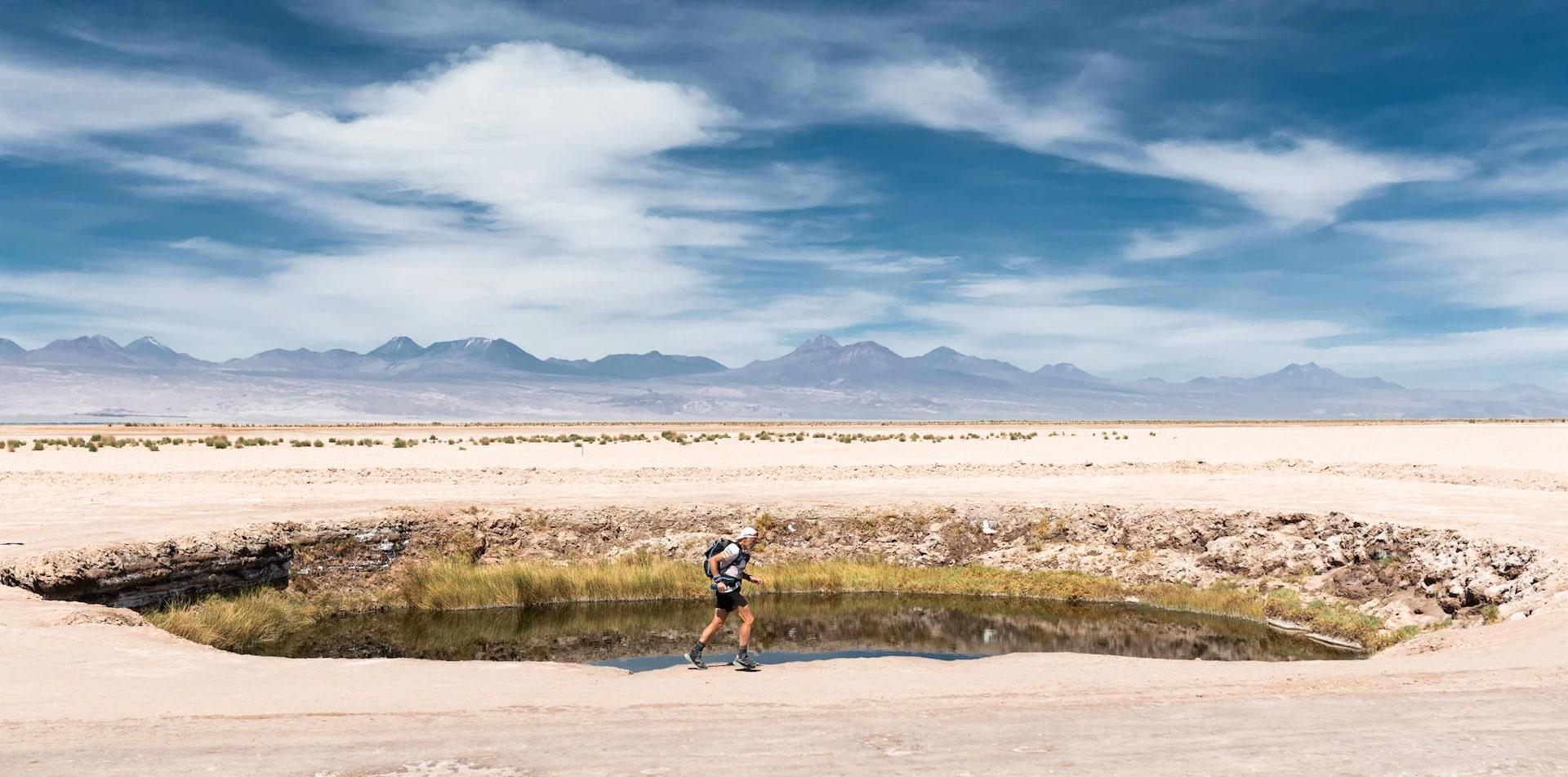Race Coverage

RACE Coverage
Atacama Crossing (Chile) 2027
Dates: 4–10 April 2027
Meeting Place: San Pedro de Atacama, Chile
Distance: 250 kilometers over six stages
Format: Self-supported ultramarathon (participants carry all gear and food; tents, water, professional staff and medical support provided)
# of Participants: 100
| Category Fee | (USD) |
| Standard Entry | $4,200 |
| Late Entry (after 4 Jan 2027) | $4,500 |
| Deposit to Secure Place | $1,500 |

1. Event Background
- The Atacama Crossing was founded in 2004 as part of the prestigious 4 Deserts Ultramarathon Series.
- Held in the Atacama Desert of northern Chile—one of the driest places on Earth—the course showcases salt flats, sand dunes, slot canyons, and the surreal landscapes of Moon Valley and Valle de la Muerte.
- The race concludes in the charming adobe town of San Pedro de Atacama, a hub for desert explorers and astronomers alike.
2. Participation Format
- Participants may run, walk, or combine both.
- Approximate distribution:
- 20% run the entire course
- 60% use a run/walk strategy
- 20% walk the entire distance
- Daily stage cut-offs are designed to accommodate all pacing styles.
- Course is marked with pink flags (no navigation is required). At night the course is marked with highly reflective tape.
3. Speed Benchmarks
- Fastest overall completion time: ~24 hours total racing time
- Slowest overall completion time: ~70 hours total racing time
- Average pace required to finish each stage within cut-off:
- Elite runners: 10–12 km/h (6.2–7.5 mph)
- Mid-pack runners: 6–8 km/h (3.7–5 mph)
- Steady walkers: 4 km/h (2.5 mph)
4. Cultural Features
San Pedro de Atacama offers a rich blend of indigenous Atacameño heritage and high-altitude desert mystique. Expect adobe buildings, ancient petroglyphs, and traditional foods like quinoa, llama meat, and coca tea. The region is known for its stargazing, spiritual quietude, and dramatic sunsets. The silence of the desert, the clarity of the skies, and the warmth of the local community create a deeply reflective atmosphere.
5. Course Highlights
- Salar de Atacama – Chile’s largest salt flat
- Valle de la Luna (Moon Valley) – otherworldly rock formations
- Valle de la Muerte (Death Valley) – dramatic desert canyon
- Slot canyons and river crossings
- Massive sand dunes and volcanic backdrops
- Foothills of the Andes Mountains
- Finish line in San Pedro de Atacama’s town square
6. Weather Conditions: April in the Atacama Desert
April offers dry air, intense sun, and crisp nights—ideal for desert racing with dramatic temperature shifts.
Temperature Overview (Average)
| Period |
High (°C / °F) |
Low (°C / °F) |
| 4–10 April |
22–28°C 72–82°F |
2–6°C 36–43°F |
Weather Notes
- Rainfall: Extremely rare—less than 1 mm annually
- Sunshine: 12+ hours of daylight daily
- Wind: Occasional gusts in open terrain
- Altitude: ~2,400 meters (7,900 feet) above sea level
Local Saying:
“Where the Earth meets the stars.” The dry air and elevation make this one of the best places on Earth for stargazing.
7. Charity & Social Impact
Participants have supported causes including education, mental health, and environmental conservation.
8. Travel & Logistics
- Meeting Place: San Pedro de Atacama, Chile
- Fly into Calama Airport via Santiago, Chile. Take a 45-minute bus transfer from Calama to San Pedro
- Hotel accommodation is included before and after the race (two nights)
- Transfers to Camp 1 are arranged by RacingThePlanet
9. Participant Reflections
Quotes from previous participants:
“This wasn’t just a race. It was a journey of perseverance, dreaming big, and doing something I never thought was possible.”
“The silence of the desert, the surreal beauty, and the strength of the community—those are the things I’ll carry forever.”
“I came to test my body. I left with a deeper understanding of my mind.”
10. Next Steps
- Register
- Begin training and nutrition planning
- Read our Expert Advice. Review past photos and videos.
- Connect with fellow participants via RacingThePlanet’s social media channels: Instagram, Facebook, YouTube, LinkedIn, X, Tiktok
- Receive monthly updates to help you prepare for the Atacama Crossing
11. What’s Included
An entry for a RacingThePlanet ultramarathon typically includes a comprehensive package designed to support participants through the entire race experience. Here's what's generally included:
- Race logistics and operations across all stages and checkpoints
- Hotel accommodation before and after the race (two nights)
- Shared tent accommodation at campsites each night (seven nights)
- Cultural experiences and local engagement where applicable
- Drinking water at campsites and checkpoints
- Medical support from wilderness doctors throughout the race
- Course markings
- GPS tracking
- Finisher’s medal
- Commemorative race jacket or shirt
- Post-race celebration and awards ceremony
Participants are responsible for their own food, mandatory gear, and travel to / from the race location. You can find full details on RacingThePlanet's official website.
12. RacingThePlanet UltraLite
RacingThePlanet UltraLite is a seven-day footrace designed for those seeking an ultramarathon experience with greater flexibility. Held alongside the full RacingThePlanet Ultramarathon, UltraLite participants run 10 or 20 kilometers per day and may skip stages if needed. Completing at least 50 kilometers earns a finisher’s medal. While competitors carry emergency gear, their main equipment is transported between camps. Participants stay in shared tents and enjoy the same stunning landscapes and cultural immersion. Open to anyone aged 18 and older, UltraLite offers endurance, adventure, and community in a more accessible format. Register here.







 Newsletter
Newsletter
 Online Store
Online Store
 Login
Login




